Table of Contents
ToggleIn a world where time is money and every minute counts, automation is the superhero we didn’t know we needed. Enter Zapier, the magical tool that connects your favorite apps and saves you from the mundane task of manual data entry. Imagine a life where you can kick back while your apps do the heavy lifting—sounds like a dream, right?
Overview Of Zapier
Zapier serves as a premier platform for automating tasks across numerous applications, streamlining workflows effectively. This tool connects over 5,000 apps, enabling users to create automations, known as “Zaps,” without any coding experience. Each Zap consists of a trigger and one or more actions. The process begins when a specified event occurs in one app, prompting automatic tasks in another app without user intervention.
Users can select from pre-built templates for common workflows, which simplifies the setup process. Businesses often leverage Zapier to minimize repetitive tasks, freeing employees to focus on strategic initiatives. For instance, a marketing team can automate lead management, transferring new entries from forms directly into a CRM.
Zapier’s user interface remains intuitive, ensuring accessibility for beginners. Each task’s automation can run seamlessly in the background, allowing users to manage multiple workflows efficiently. By centralizing various app functionalities, Zapier enhances productivity and reduces human error.
Additionally, Zapier offers feature-rich integrations that cover a wide range of industries and use cases. This flexibility allows individuals to customize their automations, aligning them with specific needs. Regular updates expand the capabilities, ensuring users benefit from the latest features and optimizations.
Emphasizing ease of use and functionality, Zapier empowers users to innovate their workflows confidently. Anyone seeking to automate mundane tasks can find a solution within the vast ecosystem of integrations that Zapier provides. This tool stands out as an essential asset for modern businesses looking to improve efficiency.
Getting Started With Zapier

Getting started with Zapier involves simple steps that help users create effective automations. Familiarity with the basic elements can enhance the experience of using this powerful tool.
Creating An Account
To create an account, navigate to the Zapier website. Users can select the “Sign Up” button in the upper right corner. Providing an email address and creating a password completes the registration. Alternatively, users can sign up using existing Google or Facebook accounts for quicker access. After registration, an email confirmation may be required to verify the account. It’s essential to check the inbox for this confirmation to proceed with the next steps.
Navigating The Dashboard
Navigating the dashboard starts with logging into the account. Users immediately see their Zaps and workflows in the dashboard layout. A sidebar provides easy access to key functions, such as exploring templates or managing integrations. Additionally, the central area displays recent activity, helping users monitor changes and updates. Clicking on the “Make a Zap” button initiates the automation process. Overall, the dashboard is designed for intuitive usage, enabling users to streamline their workflow quickly.
Building Your First Zap
Creating a Zap involves two major steps: selecting a trigger app and setting up an action app. Each step provides opportunities for customization based on specific needs and workflows.
Choosing A Trigger App
Begin the Zap setup by selecting a trigger app. This app initiates the automation process when a specific event occurs. Popular options include Gmail, Trello, and Slack, among others. Select a trigger event that matches the workflow requirements, such as “New Email” or “New Card.” After choosing an app, connect it to your Zapier account. Authorizing access ensures seamless data flow between the apps. Test the trigger to confirm everything functions correctly. Testing validates that the desired event will trigger the automation accurately, facilitating the next stage.
Setting Up Your Action App
After defining the trigger, proceed to set up the action app. This app responds to the trigger by performing designated tasks. Options vary widely, supported by Zapier’s extensive application catalog. Choose an action event that aligns with your objectives, such as “Create Lead” in your CRM. Configure the action by mapping fields from the trigger app to the action app accurately. For instance, link the email address from a new lead form to the corresponding field in the CRM. Testing the action ensures data transfers as intended, helping confirm that all components work together smoothly.
Advanced Features Of Zapier
Zapier offers advanced features that enhance automation capabilities beyond basic Zaps. Users can maximize efficiency and customize workflows using tools like multi-step Zaps and filters.
Multi-Step Zaps
Multi-step Zaps allow users to create complex workflows involving multiple actions from different applications. Users can connect a single trigger to several actions, enabling them to automate intricate processes in one sequence. For example, when a new lead enters a CRM, a multi-step Zap can send a follow-up email, update a spreadsheet, and notify the sales team simultaneously. This functionality supports greater automation flexibility, ensuring that tasks get completed faster and with fewer manual inputs.
Filters And Paths
Filters and paths enable users to control the flow of tasks within a Zap based on specific conditions. Filters allow actions to execute only if certain criteria are met, helping streamline operations. For instance, a business may set a filter that triggers an email alert only when a customer makes a purchase above a specific amount. Paths offer even more customization by allowing users to create branching workflows, where different actions occur depending on varying conditions. This layering of decisions enhances efficiency and improves user control over the automation process.
Tips For Getting The Most Out Of Zapier
Utilizing keyboard shortcuts can significantly enhance the efficiency of using Zapier. Shortcuts speed up the navigation process, allowing users to move quickly through different sections of the dashboard. Customizing notifications helps keep users updated on Zap performance, ensuring no important events get missed.
Leveraging the Zap history is essential for monitoring automation. Users can easily track errors, review actions taken, and ensure the integrity of workflows by checking the history logs. Regularly reviewing templates saves time and effort; users can adjust existing Zaps to better suit changing needs without starting from scratch.
Exploring the Zapier community provides valuable insights. Engaging in forums lets users exchange ideas and learn best practices. Testing Zaps before full implementation is crucial; users should verify that every step functions as intended to avoid disruptions in workflow.
Organizing Zaps into folders can streamline management. Users can categorize based on project types, priority levels, or departments, facilitating easier access to specific automations. Integrating with other platforms broadens possibilities, encouraging users to connect less common applications and maximize efficiency.
Taking advantage of Zapier’s built-in analytics helps measure effectiveness. Users can assess automation impact on productivity by analyzing completion rates and response times. Reassessing Zaps periodically, especially with business growth, maintains relevance and effectiveness.
Setting up filters and paths within Zaps allows for nuanced automation. Users gain control over action sequences, enabling precise responses based on various conditions. Collaborating with team members ensures broad input and enhances the quality of workflows, creating a more integrated approach to automation.
Zapier stands out as a powerful tool for automating workflows and enhancing productivity. Its user-friendly interface and extensive integrations make it accessible for individuals and businesses alike. By leveraging the features discussed, users can streamline repetitive tasks and focus on more strategic initiatives.
With the ability to create custom Zaps and utilize advanced features, Zapier empowers users to tailor their automation processes to fit specific needs. Regularly exploring new templates and community insights can further optimize the automation experience. As organizations continue to seek efficiency in their operations, mastering Zapier will undoubtedly be a game-changer in achieving those goals.








